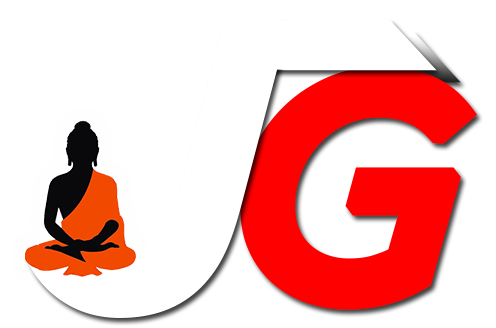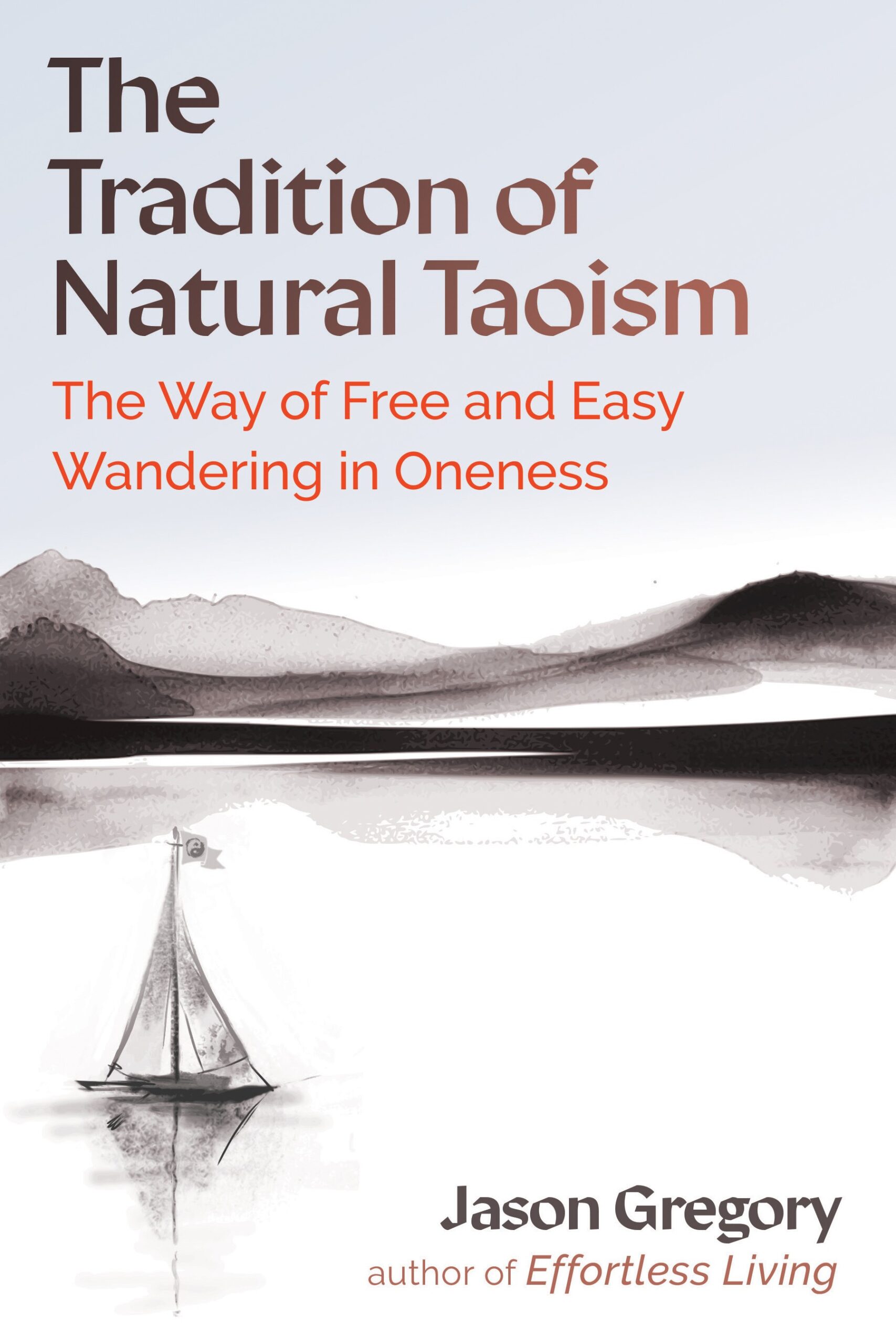What we are capable of usually gets discovered.
When, while the lovely valley teems with vapor around me, and the meridian sun strikes the upper surface of the impenetrable foliage of my trees, and but a few stray gleams steal into the inner sanctuary, I throw myself down among the tall grass by the trickling stream; and, as I lie close to the earth, a thousand unknown plants are noticed by me: when I hear the buzz of the little world among the stalks, and grow familiar with the countless indescribable forms of the insects and flies, then I feel the presence of the Almighty, who formed us in his own image, and the breath of that universal love which bears and sustains us, as it floats around us in an eternity of bliss; and then, my friend, when darkness overspreads my eyes, and heaven and earth seem to dwell in my soul and absorb its power, like the form of a beloved mistress, then I often think with longing, Oh, would I could describe these conceptions, could impress upon paper all that is living so full and warm within me, that it might be the mirror of my soul, as my soul is the mirror of the infinite God! O my friend — but it is too much for my strength — I sink under the weight of the splendor of these visions! A wonderful serenity has taken possession of my entire soul, like these sweet mornings of spring which I enjoy with my whole heart. I am alone, and feel the charm of existence in this spot, which was created for the bliss of souls like mine. I am so happy, my dear friend, so absorbed in the exquisite sense of mere tranquil existence, that I neglect my talents. I should be incapable of drawing a single stroke at the present moment; and yet I feel that I never was a greater artist than now. When, while the lovely valley teems with vapor around me, and the meridian sun strikes the upper surface of the impenetrable foliage of my trees, and but a few stray gleams steal into the inner sanctuary, I throw myself down among the tall grass by the trickling stream; and, as I lie close to the earth, a thousand unknown plants are noticed by me: when I hear the buzz of the little world among the stalks, and grow familiar with the countless indescribable forms of the insects and flies, then I feel the presence of the Almighty, who formed us in his own image, and the breath of that universal love which bears and sustains us, as it floats around us in an eternity of bliss; and then, my friend, when darkness overspreads my eyes, and heaven and earth seem to dwell in my soul and absorb its power, like the form of a beloved mistress, then I often think with longing, Oh, would I could describe these conceptions, could impress upon paper all that is living so full and warm within me.
What we are capable of usually gets discovered.
When, while the lovely valley teems with vapor around me, and the meridian sun strikes the upper surface of the impenetrable foliage of my trees, and but a few stray gleams steal into the inner sanctuary, I throw myself down among the tall grass by the trickling stream; and, as I lie close to the earth, a thousand unknown plants are noticed by me: when I hear the buzz of the little world among the stalks, and grow familiar with the countless indescribable forms of the insects and flies, then I feel the presence of the Almighty, who formed us in his own image, and the breath of that universal love which bears and sustains us, as it floats around us in an eternity of bliss; and then, my friend, when darkness overspreads my eyes, and heaven and earth seem to dwell in my soul and absorb its power, like the form of a beloved mistress, then I often think with longing, Oh, would I could describe these conceptions, could impress upon paper all that is living so full and warm within me, that it might be the mirror of my soul, as my soul is the mirror of the infinite God! O my friend — but it is too much for my strength — I sink under the weight of the splendor of these visions! A wonderful serenity has taken possession of my entire soul, like these sweet mornings of spring which I enjoy with my whole heart. I am alone, and feel the charm of existence in this spot, which was created for the bliss of souls like mine. I am so happy, my dear friend, so absorbed in the exquisite sense of mere tranquil existence, that I neglect my talents. I should be incapable of drawing a single stroke at the present moment; and yet I feel that I never was a greater artist than now. When, while the lovely valley teems with vapor around me, and the meridian sun strikes the upper surface of the impenetrable foliage of my trees, and but a few stray gleams steal into the inner sanctuary, I throw myself down among the tall grass by the trickling stream; and, as I lie close to the earth, a thousand unknown plants are noticed by me: when I hear the buzz of the little world among the stalks, and grow familiar with the countless indescribable forms of the insects and flies, then I feel the presence of the Almighty, who formed us in his own image, and the breath of that universal love which bears and sustains us, as it floats around us in an eternity of bliss; and then, my friend, when darkness overspreads my eyes, and heaven and earth seem to dwell in my soul and absorb its power, like the form of a beloved mistress, then I often think with longing, Oh, would I could describe these conceptions, could impress upon paper all that is living so full and warm within me.
What we are capable of usually gets discovered.
Yugas: The Hindu Map of Time
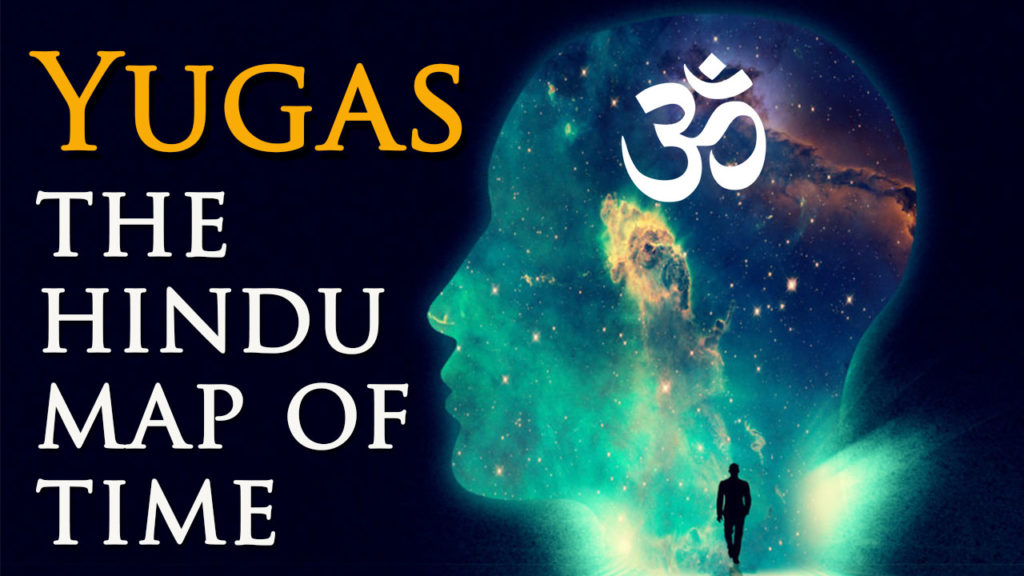
Yugas: The Hindu Map of Time The Eastern view of time is completely different to the Western view. A perfect example of this is the Hindu time system called the Yugas. The word yuga in Sanskrit means age, cycle, or world era. The yugas are a complex world-age doctrine of four ages. The yugas map the cycles of change within the universe and consciousness. The yugas build a solid framework for understanding how we experience time and eternity, and how they are related to one another. This way of thinking is completely different to the view of time and eternity held firm by Western religions and the West in general. The Western view of time is linear and this effect’s the Western view of eternity, as the idea of an eternal “heaven” becomes something we have to wait for until after death. This Western concept implies that eternity is bound to time. This is ridiculous considering eternity can only be ever-present in this very moment and can only be experienced when limiting thoughts and thinking have completely ceased. The Eastern view of eternity illustrates that eternity can be nowhere else but in this present moment, and a lot of their time systems and philosophies are based on it. As a result, the relationship between time and eternity is thought of very differently in the East, especially in the yuga system. Many Eastern traditions don’t map time in the linear sense, but instead, they designed systems to understand time’s nonlinear qualities in relation to matter, mind, and spirit. In Hinduism, the nonlinearity of time is broken into the yuga cycles, which map the consciousness that drives the process of linear time fueling human civilization. Kalpa There are two yuga systems that are somewhat similar, but also a lot different. There is an ancient long-count system and a more recent short-count system. Both systems are based on the concept of kalpa. Kalpa is a Sanskrit word that means aeon in Hindu and Buddhist cosmology. A kalpa equals 4.32 billion years. This massive period of time is not about lifetimes or an age, but rather the life of Earth. The concept of kalpa is described in the ancient texts of the Puranas, especially the Vishnu Purana and Bhagavata Purana. One kalpa of 4.32 billion years is regarded as a day of Brahma. If you think this is a long time, a mahakalpa consists of 100 years of Brahma which is 313, 528, 320, 000, 000 years. The Long-count Yuga System In the long-count system one kalpa is made up of one hundred mahayugas (great yugas). The duration of a mahayuga is built on a system of four yugas. These yugas are Satya Yuga, which is the ideal or truthful age spanning 1,728,000 years. Next is Treta Yuga, which is the age where virtue has declined by a quarter of Satya Yuga. Treta Yuga spans 1,296,000 years. Treta Yuga is followed by Dvapara Yuga. Dvapara Yuga is the age where virtue is reduced by half of what it was in Satya Yuga. Dvapara Yuga spans 864,000 years. The last yuga, and we could say definitely the least, is Kali Yuga. Kali Yuga is where virtue is reduced to a quarter. Thankfully in the greater scheme of things, Kali Yuga only spans the time of 432,000 years. Well, I know it’s still a long time, but in the universal sense it’s quite small. According to the long-count system what yuga are we in right now? It is commonly believed we are in the heart of Kali Yuga. According to the dates suggested by authorities, we might only be at the beginning of this yuga. It is believed that the dark age of the Kali Yuga commenced with the death of the Godly sage Krishna after the famous battle in Kurukshetra, documented in the Mahabharata epic. Traditional Hindu authorities put this date at 3102 BCE. Though many scholars dispute this date, as they believe a date of around 1500 BCE is more probable. Nevertheless, if we are to take the yuga world-age doctrine seriously, we are only at the beginning of the Kali Yuga. We’ve been on this long descent from the golden age of the Satya Yuga until now. This slow process spanning millions of years stupefied our mind into the characteristic of Kali Yuga. The Character of the Kali Yuga What is the characteristic of the Kali Yuga? The core characteristic is our minds identification with the external world and a turning away from the inner world. This is where we focus on everything in the outside world and forget about the inner world. We focus on how we look, our anxiety about how we are perceived by others, our reliance on sensory needs, our dependency on relationships, our over attachment to people and material possessions, and our focus on acquiring assets to promote our own self-interest. The Kali Yuga, then, is basically the involution of the human mind into gross matter, which means our mind is entangled with the outside world. Materialism, then, is the heart of the Kali Yuga. The minds tendency in this age is geared towards consumerist thinking. Consumerism becomes the accepted way of life in this age. And it is hard to argue with this ancient view of the Kali Yuga when we look outside and see what mainly drives people. The lowest point of the Kali Yuga might be technological transhumanism, as many people would rather be a robot and live forever than a natural human. The integration of mind into technology will likely be the lowest point of the Kali Yuga, if it happens. This technological motivation is the Kali Yuga belief that the material universe is everything. As a result, the inner world of consciousness is not considered valuable without the material world. This type of thinking is one of the greatest threats to the survival of human race. So before you play unconsciously with your phone, ask yourself what that habit is doing to you and how is it training your mind to be. I find
My Top 5 Books of 2018
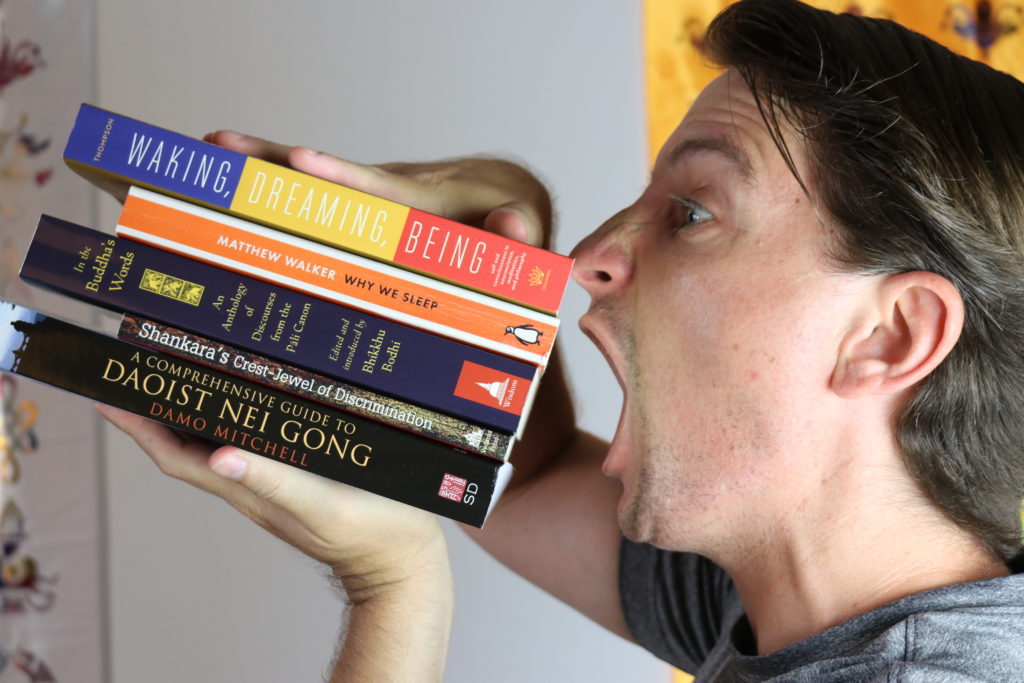
My Top 5 Books of 2018 There were so many superb books in 2018 but enough time to get through all of them. And I’m not one to waste time, so that means there were a truckload of great books. Many in-depth books on consciousness studies surfaced in 2018, along with some breakthrough books on spirituality, philosophy, psychology, and optimal performance (including my own book Effortless Living). Last year I mentioned to you how I aspire to read at least 10 books a year and explained that you should also try and hit the target of 5-10 books, as this shows you have not been wasting your time on things that don’t matter. Instead you have invested in yourself. Please let me know in the comments section if you reached this target. Without further ado here are my top five books of 2018 (not all published in 2018). Waking, Dreaming, Being: Self and Consciousness in Neuroscience, Meditation, and PhilosophyBy Evan Thompson This is one of the most unique and important books of our time (and maybe beyond our time). I discovered this book in a most unlikely place, it was recommended by Swami Sarvapriyananda. You would never think a Hindu Swami would recommend a book on Western neuroscience. But this is what makes Thompson’s book different to the rest. Thompson himself was brought up on Eastern philosophy, especially Buddhism. But the link between Sarvapriyananda and Thompson is that in Waking, Dreaming, Being the organizing principle comes from the first recorded map of consciousness found in the ancient Indian texts known as the Upanishads. According to the Upanishads there are four states of consciousness. There are the common states of waking, dreaming, and dreamless sleep, and then there is the fourth states of pure awareness (turiya) which is found in the Mandukya Upanishad, arguably the most important Upanishad for that fact. This idea of pure awareness pervades Eastern thought, even Buddhism. Modern science, and most people in general, assume that consciousness has a biological origin, most likely in the brain. But contemplatives in the East have studied consciousness for thousands of years and believe that pure awareness is not located in our brain, it has no physical origins (what philosopher David Chalmers calls the “hard problem” of consciousness). This is where Thompson’s experience as a Western philosopher and scientist along with his years of studying the great Eastern traditions are all beneficial. He goes into detail and makes a claim for both sides, is the idea of pure consciousness still a phenomenon of the brain or is it beyond the physical world. In the end, he offers some of the most unique research and insights on the subject of pure awareness in Eastern philosophy. Why We Sleep: Unlocking the Power of Sleep and DreamsBy Matthew Walker This is one of the most important books for the modern busy world, especially in regards to our health and sanity. Too often people will neglect their sleep to be more successful and get more done. But all this actually does is diminish your chances of being successful and getting more done, as Matthew Walker scientifically points out in his book. People never associate their stress and illnesses with a lack of sleep, as this is an area of research that has been avoided for far too long. Thankfully, Walker has taken the time and effort to scientifically prove to us the benefits of sleep for our health, sanity, and longevity. After reading his wonderful book, you will have no other option but to prioritize your sleep because it is the foundational pillar of everything else we experience in life. As Walker suggests, don’t be afraid to drift off to sleep while reading. It is normal to rest and sleep, don’t fight it. In the Buddha’s Words: An Anthology of Discourses from the Pali Canon (The Teachings of the Buddha)By Bhikkhu Bodhi This is the foundational text for Buddhist studies and for those who practice Buddhism or are interested in learning. It is the most important Buddhist text to read for any school of Buddhism because it is the original Pali Canon, the actual discourses of the historical Buddha. This book gives you an insight into early Buddhism and the Theravada school of Buddhism. Most people will likely not start with this book when they begin their Buddhist studies, but in an ideal world this book would be the first book you should read on Buddhism and the Buddha. This book will give you a taste of what it is like to read the ancient suttas (sutras) with their unique repetitive style (this may be laborious for those unfamiliar with the sutta repetitive style). And Bhikkhu Bodhi has done a tremendous job with the translation and commentary which makes for an enjoyable and enlightening read. All of his translations sparkle with clarity and wisdom, but none so more than this amazing book. So if you are interested in the wisdom of the Buddha then begin here to build a solid foundation for your future studies. Shankara’s Crest Jewel of Discrimination (Vivekachudamani) By Swami Prabhavananda Shankara’s Vivekachudamani (Crest-Jewel of Discrimination) is a pure transmission of the nondual teachings of Vedanta. In some sense, Shankara lays out the nondual teachings of Advaita Vedanta more clearly for everybody than the Upanishads, Bhagavad Gita, and Brahma Sutras. This is because not everybody can grasp the mystical depth of the three main texts of Vedanta. But even though the three main texts of Vedanta are more more important to read and contemplate long-term, the Vivekachudmani is an extension of them and a great explanation of them, especially for people new to Vedanta. Shankara had a wonderful ability to see into the heart of Vedanta and bring back this jewel of wisdom from the eternal ocean of Brahman to the shores of our world. A Comprehensive Guide to Daoist Nei Gong By Damo Mitchell Back in 2015 in my home in Tiruvannamalai and then
Understanding Flow – Part 3 Intelligent Spontaneity
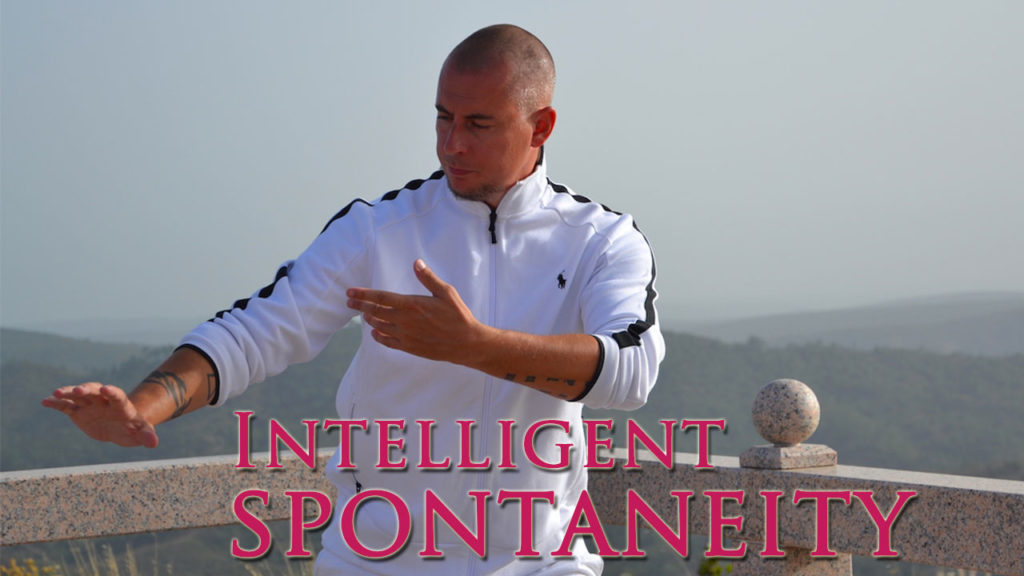
Understanding Flow – Part 3 Intelligent Spontaneity The story of Cook Ting is about how we effectively move through the world with skill and not feel resistance. Reaching your optimal potential is also the same, meaning you attain expert skill in your desired craft and that extends into life in general. This feeling of effortlessness, or flow and wu-wei, is a state of psychological ease we feel through our whole body. The goal of wu-wei, then, is to effectively move smoothly through all aspects of your life, where even unexpected events in your life are dealt with spontaneously with intelligence. No obstacle is too big or even really perceived as an obstacle anymore. In a state of wu-wei you don’t press up against obstacles, but instead you act in the same fashion as the gentle key trying to open the door, which means you may absorb the pressure of an obstacle but because you don’t resist it you overcome it without forcing the outcome. This absorb and action technique is one of the foundational pillars of traditional martial arts. Modern martial artists, especially mixed martial artists, often use the word flow. It is used when someone appears to be very lucid and in the zone. Yet, as I mentioned, common understandings of the concept flow are at a novice level and this goes for a lot martial artists. The spontaneous nature expressed through us in a state of wu-wei is the deeper and more powerful raw material of our hot cognition functioning optimally. When there is no interference from the over-analytical cold system, you express the spontaneity of human nature intelligently. Intelligent spontaneity, then, is a fully embodied state of mind where one is perfectly calibrated to the environment. The environment essentially becomes an extension of your skill. For example, when you are in a state of intelligent spontaneity in martial arts you are perfectly calibrated to the obstacles you face with an opponent. The opponent will try everything to land a blow but you see it almost in slow motion, like Neo in the Matrix. As a result, you act spontaneously without it feeling like a reaction because there was no conscious thought driving it. And even if you do absorb a blow you move with it, which is a technique in the Korean martial art Hapkido. This technique makes the opponent overextend and lose balance, where they usually fall to the ground. In ancient Chinese thought this approach is explained by the concepts yin which is a Chinese word for the feminine and passive energy of the universe and yang which is a Chinese word for the masculine and active energy of the universe. In Chinese thought yin nourishes yang. This means that when we are intelligently passive, or have poise in other words, we give birth to correct action minus aggression. This is a key point, correct action minus aggression. We overextend in Hapkido, or in any martial arts and life in general, when we are full of aggression and emotions. Essentially, if we are not receptive enough we will be hard and rigid. And someone hard and rigid is easily overcome by someone who is soft and flexible because they have poise and are fully present in the moment. As Bruce Lee once said, “Be like water my friend.” This effortless cognitive style is similar to the movements of a graceful dancer. Intelligent spontaneity is not only the effect of a dancer being perfectly calibrated to the environment, but it is also the essential goal of martial arts, or any skill for that matter. In a state of intelligent spontaneity we approach life with a mind of no deliberation. An expert craftsman embodies this effortless state of mind. The craftsman integrates the two systems into mind-body holism. As a result, they are perfectly adapted to the world around them. But, to cultivate expert skill and skill in life, we have to understand how a craftsman disengages from the cold system to allow the hot cognitive virtues of nature to spontaneously flower. The expert craftsman is a perfect example of how both systems function together to evoke intelligent spontaneity. Their mind absorbed in their craft is a metaphor for how we too can be absorbed fully in life through a chosen skill. A skilled craftsman’s integration of mind and body back into its original holism is the result of years of training their embodied cognition to be as natural as nature itself. The craftsman moves effortlessly through their skill and this is applied to life in general. When the two systems function naturally in harmony you will be perfectly calibrated to the environment. This integration of both systems means that the mind is embodied and the body is mindful. To make the two systems integrated and working together harmoniously, we need to develop the ability to concentrate for extended periods of time. This will eventually evoke a deep level of focus that arises from the hot system. A skilled craftsman can evoke this ability spontaneously anytime if it is needed, to the extent that it is as normal as chewing food. The way the process begins is through the long and arduous training which is required to call on a skill upon command. The process of learning a skill to this heightened degree is dependent on a strong cold system to begin with. A strong cold system is dedicated to the theory of a particular skill and the discipline required for it to become embodied. We have all tried to get better at something which requires practice every day. Usually we don’t want to use a lot of effort but something inside says “stop being a weakling. Suck it up and push forward.” That inside dictator is of course the cold cognition, and it is a strong cold cognition if the message is taken on board to push forward. When a craftsman strengthens
Understanding Flow – Part 2 Ancient Philosophy
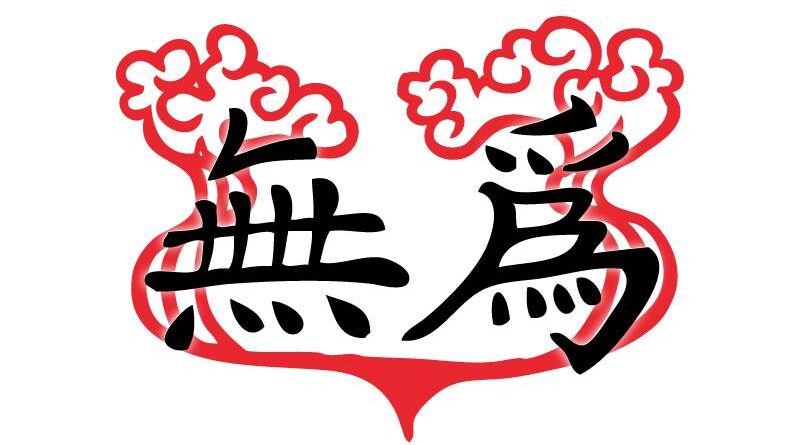
Understanding Flow – Part 2 Ancient Philosophy The embodied model of the self was the primary viewpoint during the Warring States period of China, and also other parts of Asia. But it was in China especially that we discover the embodied mind model. During the Warring States period there were numerous philosophers and sages whose names we still know today. Most notably Lao-tzu, Confucius, Mencius, and Chuang-tzu. Though their philosophies may somewhat differ, their way for understanding the mind and body was the same. Their view of human nature was mind-body holism. Their philosophies, social systems, religions, and ritual practices reflect this holistic view. From centuries of ancient Chinese people following their philosophies and rigorous training to cultivate harmonious dispositions in the self, there is no doubt according to them that human cognition is embodied. Any other model, such as mind-body dualism, was shown the contempt it deserved. If in ancient China the embodied model of the self was understood to be how humans are hardwired, then we can see why a healthy skepticism developed towards mind-body dualism and its idea of a rational agent in control of an unruly body. In the East, in general, this skepticism shown towards rationality is culturally held firm. The battle within us, then, is not between a rational agent attempting to lord it over an unruly body. But instead it is a tug of war between an allocation of function between the two systems of hot and cold cognition. In the West and modern developed world, majority of our energy is allocated towards the function of the cold system trying to control the natural hot system. But in the ancient East it is absurd to try and overemploy the cold system, especially when you consider the main driving force within us and our essential nature is within the hot system. The focus in ancient China, then, was more about ingrained skill and shaping our character because they can both be cultivated in our hot system as natural and spontaneous. Eastern thought, then, especially the ancient Chinese embodied model of the self, is an essential corrective to the way modern Western philosophy has a tendency to focus on the cold cognitive aspects of conscious thought, rationality, and willpower. As a result, the modern revolution of embodied cognition in cognitive science was inspired partially by Eastern thought, especially ancient Chinese thought. The main focus of many ancient Chinese sages and philosophers during the Warring States period was the concept wu-wei. Wu-wei literally means non-doing, non-force, and effortless action. The effortlessness of wu-wei is ultimately a state of intelligent spontaneity. And I believe intelligent spontaneity is a more accurate term than flow when we are talking about that effortless state of mind. Keep in mind though that how wu-wei is achieved differed slightly among each philosopher and sage. Chuang-tzu’s focus was on effortless skill, or in other words effortless action, which actually adapts perfectly to modern cognitive science. We can understand the effortlessness of wu-wei when we think of those times we try too hard to achieve something. When we are trying too hard to achieve an outcome we are not allowing for life to naturally happen. For example, when we put a key in a lock and try to turn the key too fast we feel resistance. To open the door you need to be loose and relaxed and when you jiggle the key ever so softly the door opens effortlessly. By not forcing you effortlessly move through the task of opening a door. The key and door analogy is not only about how expert skill is effortless, but it is also a metaphor for how we move skillfully through life. No other sage or philosopher during the Warring States period explores skill more than Chuang-tzu. The Chuang-tzu text is like a manual for cultivating skill and training spontaneity, upon a lot of other wisdom about life. And this is why Chuang-tzu synthesizes well with modern cognitive science. The skill emphasized by Chuang-tzu in the Chuang-tzu text is not only about expertise, but also life skills which are supposed to contribute to developing harmonious dispositions in the self. Chuang-tzu, on a subtle level, examines the science of skill and how to reach peak performance to the point of explaining what the actual experience is like. Chuang-tzu understood that spontaneous skill comes from the deeper, more evolutionary ancient hot system. Somehow we need to ignite the spontaneity within the hot system naturally without any effort to do so. The cold system interferes with the spontaneity of life. Even in ancient China people overly identified with the cold system which gives one this sense of being an isolated self. Chuang-tzu explains that our real nature, the authentic self, is beneath the rational cold cognition. He articulates this through skill stories that exhibit this transfer of functional allocation from the cold system back to the hot system. He uses the craftsmen as an example to explain how skill and virtues can become so much a part of us that they are instinctive and spontaneous, they are hot. One of the most famous stories in the Chuang-tzu text is about a butcher called Cook Ting (or Butcher Ding). The Cook Ting story setting is a traditional religious ceremony where an ox will be sacrificed in public for the ruler Lord Wen-hui and a large crowd of onlookers. Cook Ting is the center of attention for this religious event. This ritual of animal sacrifice demands the difficult skill of using a blade with precise timing and perfect execution. But this is not a difficult task for Cook Ting. He slices and dices the ox up so effortlessly that Lord Wen-hui is astonished. Lord Wen-hui cannot believe such a mundane skill can reach the heights of beauty similar to an artistic performance. He approaches Cook Ting to ask how he can
Understanding Flow – Part 1 Modern Science
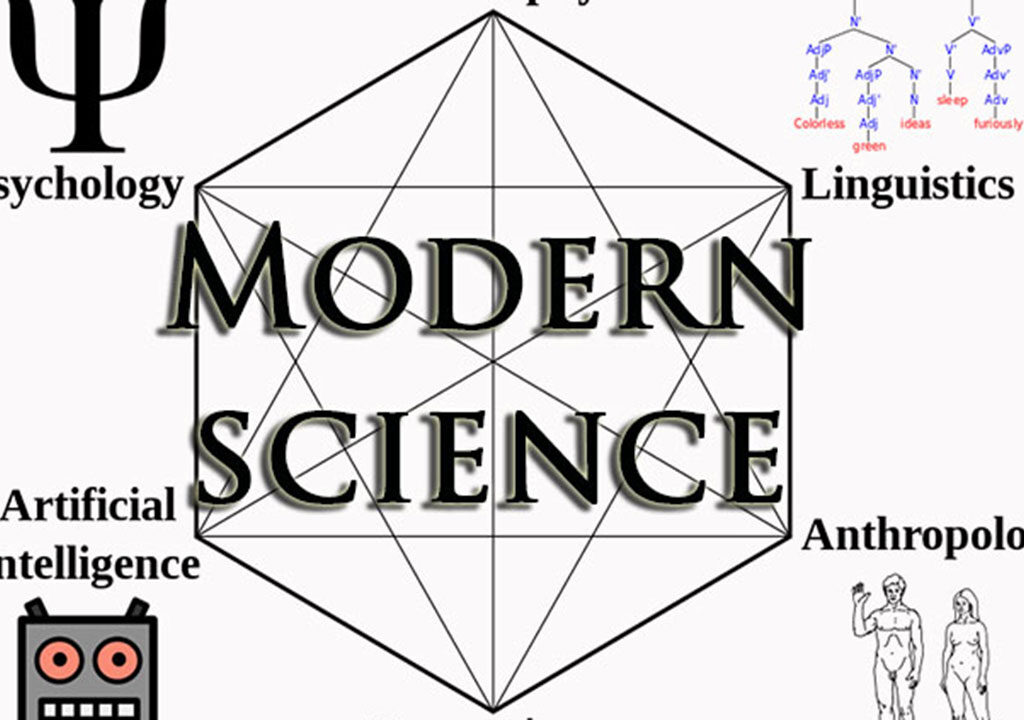
Understanding Flow – Part 1 Modern Science What is the nature of being in a flow state of consciousness? How and why do we experience flow? What truly is flow? The term flow was first coined and popularized by Mihaly Csikzentmihalyi who is a Hungarian psychologist. He wrote a fascinating book called Flow back in 1990. When we think of flow we think of an athlete, musician, writer, craftsman, or any artist when they appear to have this laser-like focus and precision which is equated with them being in the zone. But flow is a much more ancient concept going back to the Warring States period of China (475-221 BCE). Its original ancestor is known in Chinese as wu-wei, which is a concept at the heart of Taoism and martial arts. Many of us are familiar with the term flow but not with wu-wei. Understanding wu-wei and the Eastern mind it came from, is imperative for us to truly understand the depth of flow. Yet, in the modern day, our understanding of flow and how to induce it is at a novice level. The word is loosely thrown around in popular culture. We hear people proclaim that “they’re in the zone,” or more to the point “I’m in the zone” or “I’m in the flow,” which actually implies you’re not in any state of flow if you have time to speak about it. We often hear athletes state after a great performance how they felt they were in a state of flow, where all the external noise of the world was eliminated. They essentially had tunnel vision. To be highly effective at our chosen skill we need to enter a flow state of consciousness. But the problem for most of us is we have no idea how to enter a flow state. Many of us incorrectly believe this dimension of effortless skill and peak performance is a state of mind isolated to world-class performers. You need to eliminate this way of thinking and really absorb the information I am about to give you. First and foremost, cultivating skill and reaching peak performance, in other words entering a state of flow, really depends on how we understand the mind and body. This is not some new radical way of thinking. This was actually the primary focus of numerous great thinkers throughout history. It doesn’t matter whether East or West, understanding human thought and the minds function has been a central focus for as long as we can remember. We’ve always been fascinated with why cultures and traditions developed, why certain religions were born to bind community, and why someone is more skillful at a particular craft than someone else. The process of thinking and how and why we think is at the foundation of philosophy, science, religion, and art. For thousands of years, both in the East and West, there have been numerous systems for understanding the mind. Some have stuck and many have disappeared. But for as long as we can remember there has been a persistent myth pervading human civilization: mind-body dualism. This dualistic model of mind and body has become the standard template for which we study the mind and the body. As a result, it is common for us to feel this split within us, which is evident in our language and actions. This dualistic model of mind and body is the big reason we don’t understand the nature of flow. We tend to feel we are these rational minds in these completely irrational bodies. Mind-body dualism is the disembodied myth embedded in our modern thinking. This myth has led us to focus and believe firmly in an abstract rationality, where reason trumps all. So we end up believing we are these disembodied rational agents imprisoned within this meat suit we call a body. The disembodied myth is a philosophical hangover from Plato down to influential philosophers such as Descartes and Immanuel Kant. Philosophers such as these three propelled the dualistic model of mind and body along based on vague intuitions they had about a distinction between people who have minds and the physical world, which apparently doesn’t have a mind according to them. Their metaphysics led to a dualism between a disembodied mind and a physical world of things. In post-Enlightenment Europe and its colonies rational thought was portrayed as the essence of human nature. Reason became something completely disconnected from the physical world around us. Our mind, and its rationality, is thought to be superior and distinct to the body and its emotions. The disembodied myth has implanted a split within us that confuses us to no end. We have bought into the disembodied model of mind without questioning its validity. Science also has been handicapped by the disembodied model. Cognitive scientists in the mid-twentieth-century treated the human mind as a brain in a container. Many experiments were concerned with abstract information processing which led them nowhere. It wasn’t until the past few decades that cognitive science began to change its perspective. Cognitive science is slowly moving away from the disembodied dualistic model and instead is beginning to treat human thought as fundamentally embodied. Cognitive science has shown through extensive research on embodied cognition that we are not the paragons of reason we assume to be. Though, science is just catching up to this perspective. Many sages, artists, philosophers, and even athletes have questioned the overuse of rationality, as the actuality of their experience tells another story. This also might be why many artists, writers, and philosophers are usually considered as having eccentric behavior by the general public. Many sages from the East, on the other hand, are often suspicious of rational people because rational people often think too much about everything. An artist would say being overly rational destroys beauty and truth. Ask yourself what is rational about a lot of art? Or even for the
Best Books for Studying Yoga
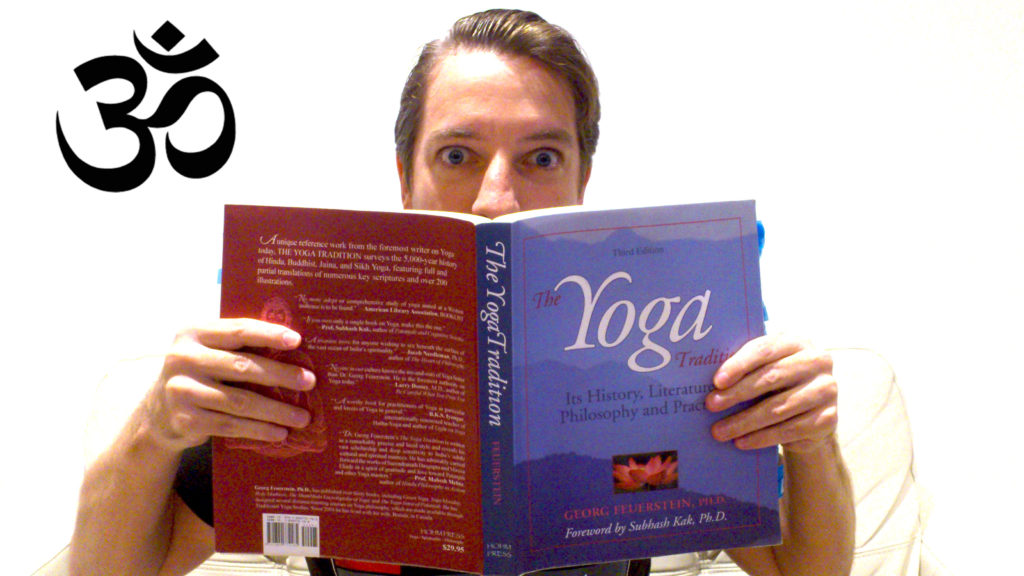
Best Books for Studying Yoga I find it disappointing that when most people hear the word “yoga” they think of an exercise routine that is focused on stretching the body, making one more flexible. I’m sorry to be the bearer of bad news, but that’s not yoga. That idea of yoga results from the cultural appropriation it went through when it went to the West, especially in places such as America. That version of yoga is a poor replica of the traditional hatha yoga which is only one branch of yoga. Actually, there are seven main paths or temperaments of yoga known in Sanskrit as hatha, mantra, tantra, karma, bhakti, raja, and jnana. Yoga is not asana and in actual fact the word asana literally means to sit or seat, revealing that the first yoga posture is sitting meditation. So, yoga is not an exercise routine where we wear skimpy tight clothes which is all too egocentric. Real yoga is about dissolving those tendencies to be egocentric, which includes our urge to be physically attractive. Yoga is a system of knowledge designed to liberate you from the idea of an isolated and separate ego so that you can reunite with the divine. The word yoga comes from the Sanskrit root yuj which means to yoke, unite, or join with the absolute Ultimate Reality (Brahman) beneath all the energy and movement of duality in the universe, known as prakrti in Sanskrit. At its core, then, yoga is a dualistic philosophy where we are supposed to break free of the gravitational pull of all the energy, including thoughts, and movement in the universe (prakrti). The way this is done is by coming back into resonance with your innate pure awareness (purusha in Sanskrit) which unites you with the Ultimate Reality, Brahman. Pure awareness is the root of our consciousness and the main principle of all forms of yoga. Patanjali, the founder of classical yoga, believes that the evolutionary aspect of mind, citta in Sanskrit, is to refine our mind back into its original state of pure awareness. Our mind (citta) is wound up in the vortex of energy and movement in the universe (prakrti). The goal of yoga is to unravel our mind from this turbulence. This is done by coming back into resonance with pure awareness, where it is said that eventually you will develop a gap between prakrti and Purusha, meaning you will be able to look on the world of form from a distance without being moved by the activity of the world. This is liberation in yoga and what all honest yogini’s and yogi’s should be striving to achieve. I will recommend the best books for you to achieve this liberated state and to further your understanding of yoga, and also how to apply it to your life. To build a foundation for understanding yoga I suggest first reading The Yoga Sutras of Patanjali. This is the foundation of yoga from the great master Patanjali. In an ideal world, I always say that it is best to read the classics first to get your head around the actual philosophy and practice. The Yoga Sutras of Patanjali is no different and I class it as one of the greatest classical texts on the planet (definitely top five). There are so many translations on the market and a lot of good ones. But I will give you my personal favorites. My favorite translation is by Chip Hartranft. His translation of The Yoga Sutras of Patanjali is translated for the modern mind but keeps its ancient beauty. I’ve read his version many times and it always plunges me deeper to reveal more about the nature of self and the universe. The second translation I recommend is by Swami Satchidananda. His translation of The Yoga Sutras of Patanjali sticks more to tradition but is very lucid and profound. It really is a showcase of how great Swami Satchidananda really was. He was one of the most honest and brilliant gurus to have graced our earth in recent history and his translation reflects his greatness. These two translations are even better when they are coupled together. Outside of The Yoga Sutras of Patanjali, the most important book on yoga is The Yoga Tradition by Georg Feuerstein. Georg Feuerstein is the greatest scholar and teacher of yoga you’ve never met or heard of. A lot of his work is criticized because of how intelligent and scholarly his writing was. But he should not be criticized for the genius he was. Actually, the onus and responsibility is on the reader is to be more intelligent and that can come about by reading his works (also criticizing someone highly intelligent because you can’t understand is an act done by those less intelligent). As for yoga, all of his works are unmatched. Even his translation of The Yoga Sutras of Patanjali is brilliant. But it is The Yoga Tradition where his knowledge and wisdom really shines. As a writer, when I read The Yoga Tradition I am in awe of how he could have wrote such a tome. In this book, Feuerstein takes you through the whole history of Hindu thought, not just yoga. He explores Vedanta, Samkhya, Jainism, and Buddhism in relation to yoga, which gives you the full scope of Indian thought. Though, if you do take the challenge and read this book you better be prepared because it is a behemoth. This is why it is sometimes referred to as the “yoga phone book.” But if you are serious about yoga then this book cannot be avoided. And you won’t regret it because it is full of insights and traditional knowledge on yoga. Another book I recommend is by Feuerstein again. It is called The Psychology of Yoga. You should read this book after The Yoga Tradition. It was the last book Feuerstein wrote before he passed away in 2012.
GO BEYOND EVERYTHING
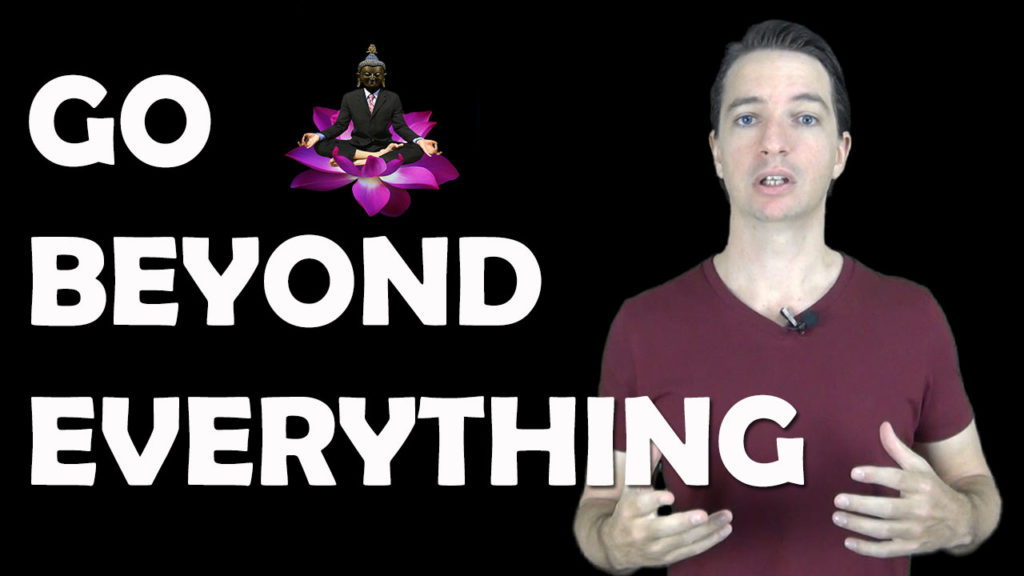
In this episode of Enlightenment Today I will explore what it means to go beyond everything and essentially going all the way. This is the spiritual ideal of the great Eastern spiritual traditions and sages. But this ultimate goal is something that frightens most people because they are not willing to truly give up their sense of self. People who become interested in spirituality forget this ideal because people often subtly use spirituality to propagate their ego rather than dissolve it. Going beyond everything means you’ve come into resonance with the underlying witness of all life.
